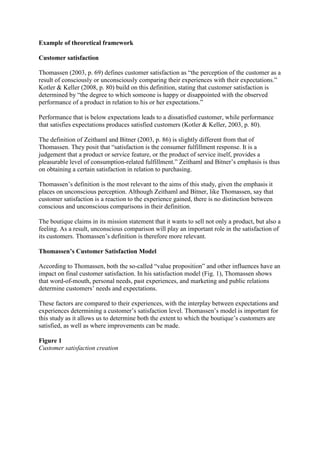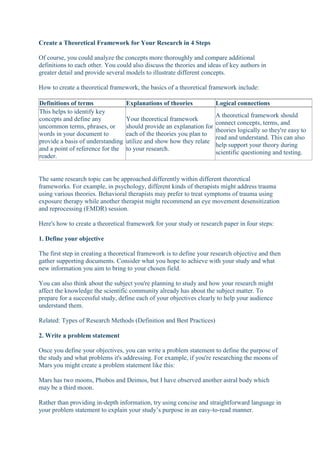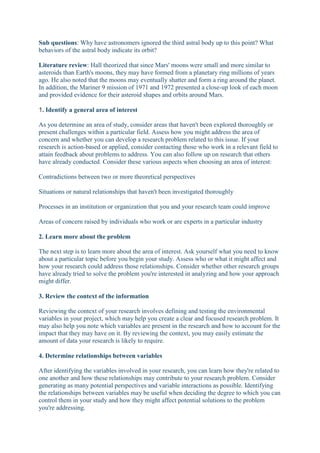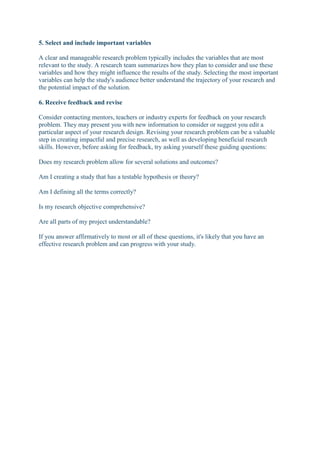The document discusses theoretical frameworks for research on customer satisfaction. It provides definitions of customer satisfaction from various authors and evaluates their relevance. Thomassen's definition, which emphasizes unconscious perception, is deemed most relevant for a study of a boutique seeking to sell feelings along with products. The document also examines Thomassen's model of customer satisfaction, which considers expectations, experiences, and other influences on satisfaction levels. Creating a theoretical framework involves defining terms, explaining relevant theories, and logically connecting concepts.





